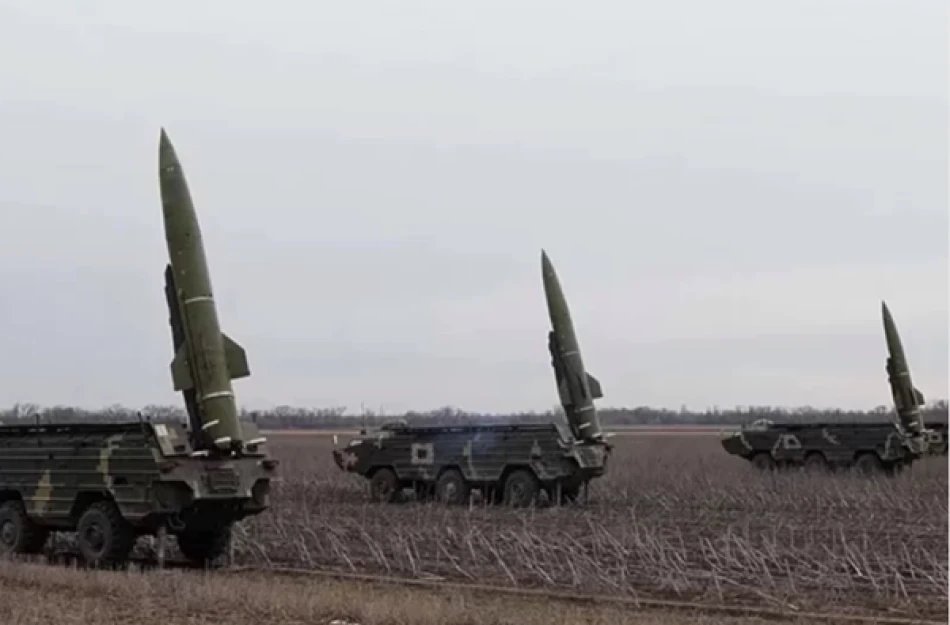
Russia Frees Itself from Limits on Intermediate-Range Missile Deployment
Russia Abandons Missile Deployment Moratorium as US Expands Medium-Range Arsenal Across Europe and Asia-Pacific
Russia has officially ended its unilateral moratorium on deploying intermediate and short-range ground-based missiles, citing the United States' expanding deployment of similar weapons systems across NATO territories and the Asia-Pacific region. The move marks a significant escalation in the global arms race and signals the complete collapse of Cold War-era missile control frameworks that once provided strategic stability between nuclear powers.
The End of Self-Imposed Restraint
The Russian Foreign Ministry announced Monday that Moscow no longer considers itself bound by previously adopted self-imposed restrictions on missile deployments. This decision comes after what Russia describes as repeated warnings about American military activities that have gone unheeded by Washington and its allies.
The timing is particularly significant as it coincides with Russia's ongoing military operations in Ukraine and heightened tensions with NATO. By abandoning these constraints, Russia is essentially preparing to mirror American tactical deployments, potentially creating a new missile crisis reminiscent of the 1980s Euromissile crisis.
American Missile Deployments Trigger Russian Response
European Theater Expansion
Since 2023, Russia has documented the transfer of American missile systems capable of launching intermediate and short-range missiles to European NATO countries. These deployments have included training exercises in Denmark using the MK-70 mobile launcher platform, specifically designed for anti-Russian scenarios.
The most provocative development involves Washington and Berlin's announced plans to deploy Typhon and Dark Eagle missile systems in Germany starting in 2026. These systems represent a permanent, rather than rotational, military presence—a red line that Moscow has consistently warned against crossing.
Asia-Pacific Military Buildup
In the Asia-Pacific region, American missile deployments have been equally aggressive. The US transferred Typhon medium-range missile systems to the Philippines in April 2024 under the guise of training exercises, but the systems have remained permanently stationed there—a clear indication of long-term strategic positioning.
More recently, during the July 2025 Talisman Sabre exercises in Australia, an Australian crew successfully fired an American PRSM missile through a US-supplied HIMARS system. With a tested range exceeding 500 kilometers, this missile falls squarely within the intermediate-range category that was once prohibited under international agreements.
Strategic Implications for Global Security
The New Arms Race Reality
Russia's decision reflects a broader trend toward military competition that has accelerated since the collapse of the Intermediate-Range Nuclear Forces (INF) Treaty in 2019. Unlike the Cold War period, when bilateral agreements provided some predictability, the current environment lacks meaningful arms control mechanisms.
Several US allies have already expressed intentions to either purchase American intermediate-range missiles or develop their own systems with ranges between 500 and 5,500 kilometers. This proliferation creates multiple potential flashpoints and complicates traditional deterrence calculations.
Market and Defense Industry Impact
The abandonment of Russia's moratorium will likely accelerate defense spending across multiple regions. European defense contractors, already benefiting from increased NATO commitments, may see additional orders for missile defense systems and countermeasures. Similarly, Asia-Pacific nations may accelerate their own military modernization programs.
For global markets, this development signals a sustained period of elevated defense spending, potentially diverting resources from civilian economic development. The semiconductor and advanced materials sectors, crucial for modern missile systems, may experience increased demand but also supply chain vulnerabilities.
Comparing Historical Precedents
The current situation bears striking similarities to the 1980s, when Soviet SS-20 missiles prompted NATO's dual-track decision to deploy Pershing II and cruise missiles in Europe. However, today's multipolar environment is more complex, with China's growing military capabilities and multiple regional powers developing their own advanced missile systems.
Unlike the eventual resolution through the INF Treaty in 1987, current diplomatic channels appear insufficient to address the escalating missile deployments. The absence of China from Cold War-era agreements also complicates any future arms control negotiations.
What This Means Moving Forward
Russia's announcement represents more than a policy shift—it signals the institutionalization of a new strategic reality where intermediate-range missiles will play central roles in regional security calculations. The Russian Foreign Ministry emphasized that specific response measures will be determined through inter-departmental analysis of American and Western missile deployments.
This measured approach suggests Russia may calibrate its deployments to match perceived threats, potentially creating a tit-for-tat escalation cycle. The most likely targets for Russian deployments include Kaliningrad, occupied Ukrainian territories, and potentially allied nations like Belarus or friendly states in the Asia-Pacific region.
The broader implications extend beyond military considerations to fundamental questions about strategic stability in a multipolar world. Without new arms control frameworks that include all major powers, the current trajectory points toward sustained military competition with significant risks for miscalculation and inadvertent conflict.
 Layla Al Mansoori
Layla Al Mansoori







